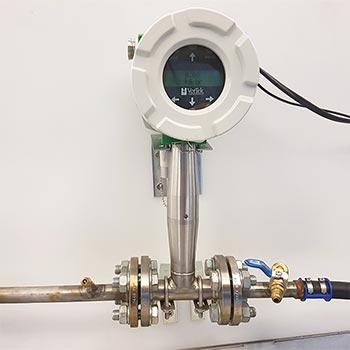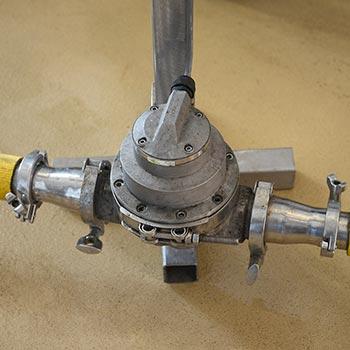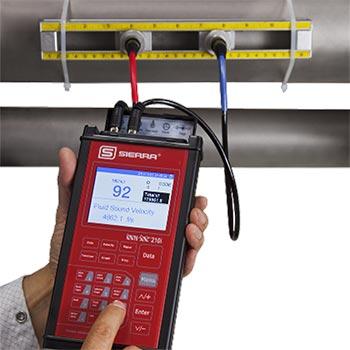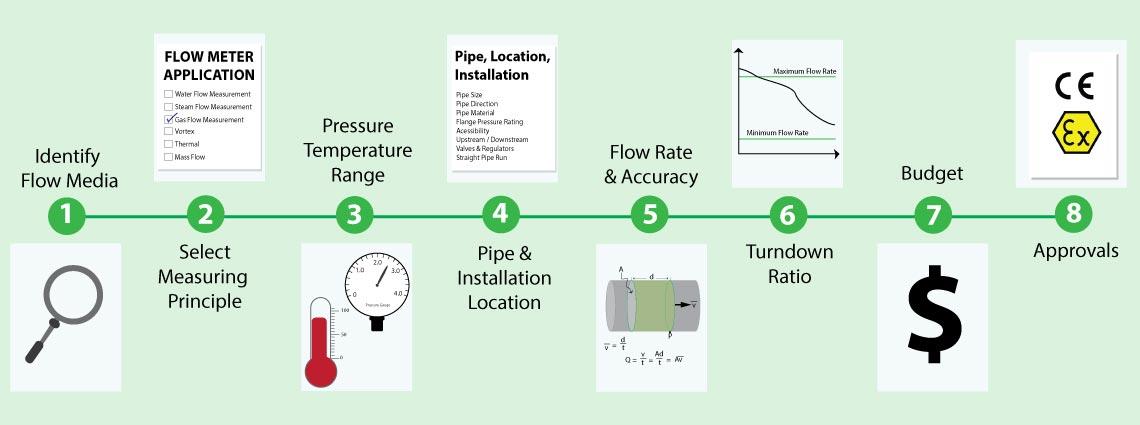Different flow measuring techniques available and the factors to be considered while choosing a flow meter?
A flow meter is an instrument that is used to measure linear, nonlinear, mass or volumetric flow rate of a liquid or a gas. One of the most common flow measurement mistakes is the reversal of this sequence: instead of selecting a sensor which will perform properly, an attempt is made to justify the use of a device because it is less expensive. Those "inexpensive" purchases can be the costliest installations.
The basis of good flow meter selection is a clear understanding of the requirements of the application. Therefore, time should be invested in fully evaluating the nature of the process fluid and of the overall installation.
The first step in flow sensor selection is to determine if the flowrate information should be continuous or totalied, and whether this information is needed locally or remotely.
Key selection criteria of a Flow Meter
Flow characteristics and flow media
It is important to know what the flow media and its pressure, temperature, allowable pressure drop, density (or specific gravity), conductivity, viscosity (Newtonian or not?) and vapor pressure at maximum operating temperature are listed, together with an indication of how these properties might vary or interact.
Type/ Measuring principle
Each type flow meter is best suited for a certain type of application. Choosing the right type is critical because of the accuracy of measurement depends heavily on these factors.
Pressure & Temperature Ranges
Expected minimum and maximum pressure and temperature values should be given in addition to the normal operating values when selecting flow meters.
Piping and Installation location
Concerning the piping and the area where the flow meters are to be located, consider: For the piping, its direction (avoid downward flow in liquid applications), size, material, schedule, flange-pressure rating, accessibility, up or downstream turns, valves, regulators, and available straight-pipe run lengths or if the area is classified for explosion hazards.
Flow rate and Accuracy
The next step is to determine the required meter range by identifying minimum and maximum flows (mass or volumetric) that will be measured. After that, the required flow measurement accuracy is determined.
Turndown ratio
Turndown can be defined as the flow rate maximum and minimum ratio that a flow meter measures within a given accuracy range. Seeing as there is no way to fully determine the exact range of flow that will be measured, it can be helpful to select a flow meter with a large measuring range.
Budget
What is the cost of the flow meter and related equipment? What about installation and maintenance costs? What are the costs of operations? Have you considered the expected lifespan of the flow meter?
Approvals
Necessary approvals required for use in hazardous areas, sanitary applications and custody transfer.




